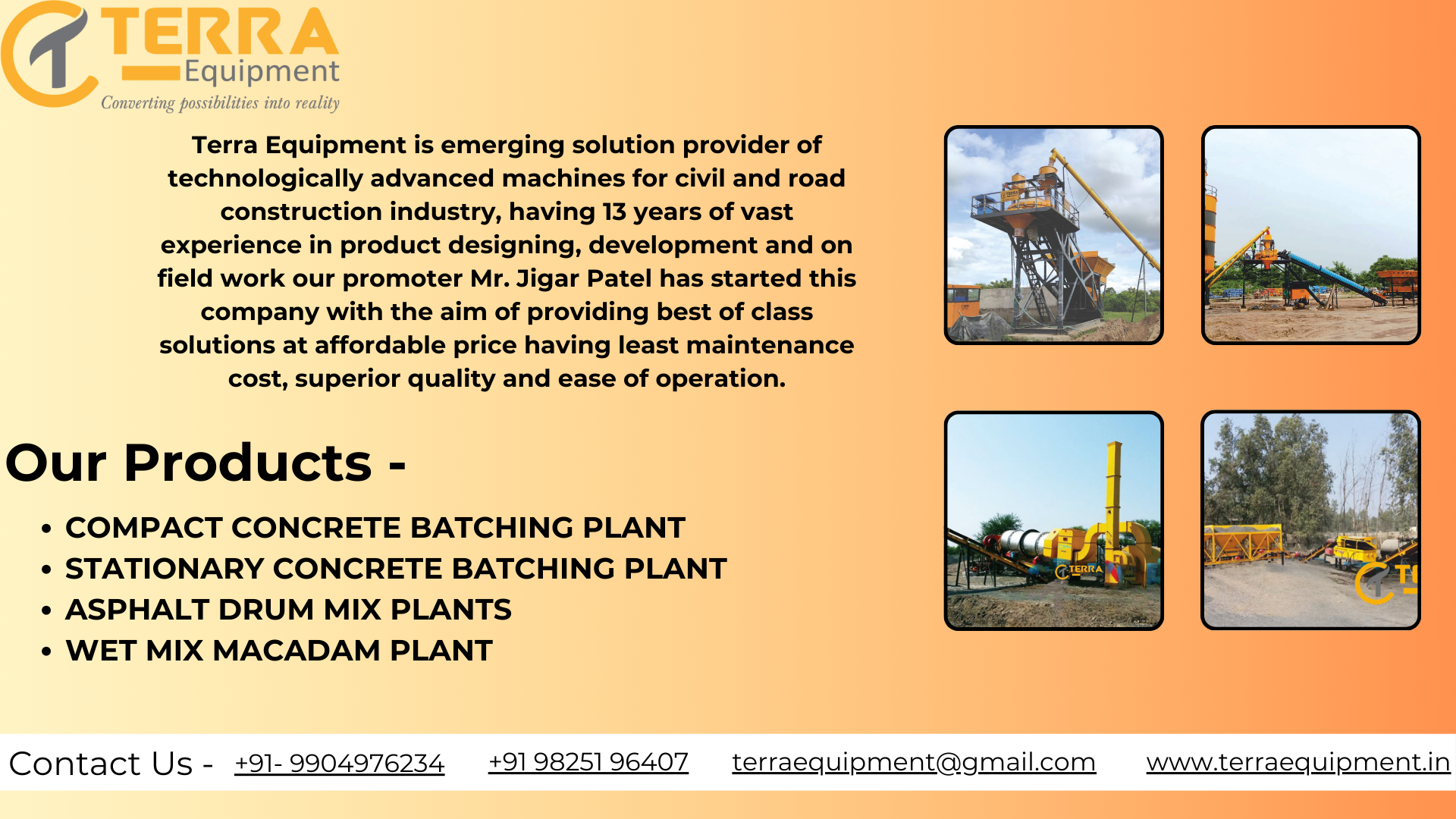Concrete Batching Plant
Description
A Concrete Batching Plant is a facility or equipment setup used to combine various ingredients like cement, water, sand, aggregates, and admixtures to produce high-quality concrete in bulk. These plants are critical to modern construction because they provide consistent, uniform, and customized concrete mixtures needed for a wide range of applications, from small buildings to massive infrastructure projects.
Concrete batching plants near you are either stationary or mobile, depending on the scale and nature of your construction needs.
Importance of a Concrete Batching Plant
-
Consistency: Delivers uniform concrete mix with accurate proportions every time.
-
Speed: Enables faster concrete production compared to manual mixing or on-site batch preparation.
-
Cost Efficiency: Reduces material wastage, labor costs, and time delays.
-
Quality Control: Ensures proper control of mix design, water-cement ratio, and strength.
-
Project Scalability: Suits both small-scale and large-scale commercial and infrastructure works.
How It’s Made – Manufacturing Process
A concrete batching plant consists of multiple components that are carefully designed and assembled to function efficiently.
1. Design Phase
-
Engineers plan the plant layout, storage bins, conveyors, control systems, and output capacity.
-
Factors like site location, environmental norms, and automation needs are considered.
2. Fabrication
-
Storage bins, mixing units, control cabins, and weighing systems are manufactured using high-strength steel.
-
Equipment like mixers (twin shaft, pan, or planetary) and screw conveyors are precision-built.
3. Assembly
-
Silo systems for cement storage, aggregate bins, conveyors, and mixers are assembled.
-
Automation systems such as PLC or SCADA are installed for digital control and data logging.
4. Calibration & Testing
-
Weighing systems are calibrated to ensure accurate proportioning.
-
Trial batches are conducted to verify output, mixing speed, and uniformity.
Where It’s Used
Concrete batching plants are widely used in:
-
Real estate and residential construction
-
Bridges and flyovers
Dams and canals
-
Metro and railway infrastructure
-
Factories and warehouses
-
Ready-Mix Concrete (RMC) supply businesses
Why Choose a Concrete Batching Plant Near You
-
Reduced Transportation Time: Minimizes concrete travel time and avoids early setting.
-
Lower Logistics Cost: Cuts down fuel and transport expenses for bulk concrete delivery.
-
On-Demand Availability: Offers the ability to produce concrete as and when required.
-
Faster Site Progress: Speeds up slab laying, column casting, and overall construction progress.
Easy Maintenance & Support: Local suppliers provide faster servicing and spare part replacement.
Significance in Construction and Infrastructure
Concrete is the foundation of modern infrastructure. A nearby batching plant ensures:
-
On-time concrete supply during peak construction hours.
-
Consistent quality across different structural elements.
-
Eco-compliance, as modern plants reduce dust and noise emissions.
Having such facilities close to construction zones contributes to sustainable and efficient infrastructure development, especially in fast-growing urban and industrial areas.
Key Features of a Concrete Batching Plant
| Feature | Description |
|---|---|
| Mixing Unit | Twin shaft, pan, or planetary mixer to ensure uniform blend |
| Storage Systems | Cement silos, sand and aggregate bins for material storage |
| Weighing System | Digital load cells for precise measurement of all materials |
| Automation & Control Panel | |
| Output Capacity | Ranges from 15 m³/hr to 120 m³/hr depending on the model |
| Mobility | Stationary or mobile plants available |
| Water Dosing System | Ensures accurate water-cement ratio for desired strength |
| Admixture Handling | Enables blending of plasticizers, retarders, or accelerators |
| Dust Collection System |
Frequently Asked Questions (FAQs)
Q1: What is the difference between a stationary and mobile batching plant?
Stationary plants are fixed installations with higher output, ideal for large projects. Mobile plants are portable, quick to set up, and better for short-term or remote sites.Q2: What is the output capacity of a concrete batching plant?
It ranges from 15 to 120 cubic meters per hour, depending on plant size and type.Q3: Is it better to buy or rent a batching plant?
For continuous and long-term use, buying is cost-effective. For short-term or project-based needs, renting is a good option.Q4: What type of mixer is used in batching plants?
Typically twin-shaft mixers are used for high-speed, homogeneous mixing. Some plants use pan or planetary mixers for special applications.Q5: Are local batching plants more economical?
Yes, local plants reduce transport costs, minimize setting delays, and offer better coordination with the project timeline.Q6: Is it safe to operate these plants near residential areas?
Only if equipped with dust control, noise reduction, and proper waste management systems, and in compliance with zoning regulations.Conclusion
A Concrete Batching Plant near you is an essential asset for achieving high-quality, consistent, and cost-efficient concrete production in modern construction. Whether for real estate development or large-scale infrastructure projects, such plants contribute significantly to speed, accuracy, and reliability.
Choosing a local, well-equipped batching plant ensures:
-
Timely concrete delivery
-
Higher structural quality
-
Reduced construction delays
-
Environmentally safe operation
It is a vital link in the supply chain of modern infrastructure and a key enabler of sustainable development.
Contact:-+91-9825196407 , +91-9825196407
Gmail:terraequipment@gmail.com-
website:-https://terraequipment.in/

